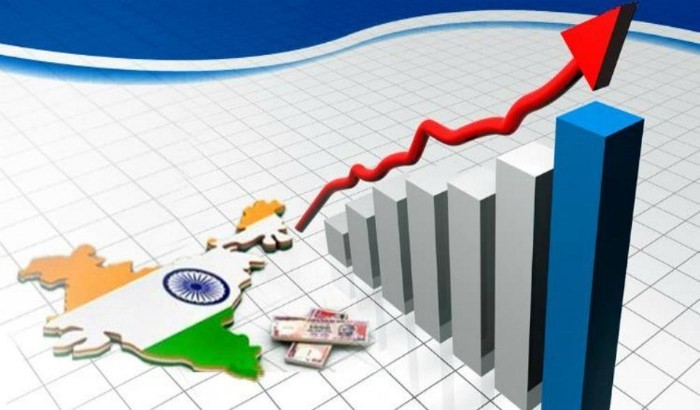
If the India story isn’t dead, it’s certainly on life support. The economy grew at 5% in the last quarter for which data is available, leading to a rash of downward recalibrations of growth for the full financial year. (India’s financial year begins on April 1.) Most recently, the Economist Intelligence Unit suggested that growth in 2019-20 will be 5.2% -- significantly below potential.
It is hard to overstate the degree of gloom you’ll find in policy and business circles in India right now, at least behind closed doors. There was a time, not long ago, when 7% or even 8% growth was considered India’s birthright, the floor below which GDP growth would not drop unless there was a global crisis. Today, we’re staring instead at a 7% ceiling -- a ceiling that, most of the time, may loom out of reach.
What’s going on? The Indian economy is facing a perfect storm, beset by a combination of cyclical and structural factors that makes recovery doubly difficult. The immediate concern is crashing demand. As freshly minted Nobel laureate Abhijit Banerjee has pointed out, household consumption has fallen since Prime Minister Narendra Modi entered office in 2014, something that hasn’t happened in “many, many, many, many years.” His advice: Get money into the hands of the rural poor and “pray.”
The immediate cause of the demand slowdown may have been the twin blows of demonetization and the new indirect tax regime, as well as the collapse of shadow banking credit last year. But there is a deeper problem as well: Promoting consumer demand should never have been considered a sustainable growth model in the first place. Instead, India should have been focusing on encouraging greater levels of private investment.
This reflects a broader unwillingness to confront the structural problems in the Indian economy. In 2013, as India was buffeted by the taper tantrum, many voters believed that replacing the apparently ineffective Congress-led government in New Delhi would lead to a growth revival. Instead, fundamental problems are being exacerbated.
One of the central issues in India is the size and inefficiency of the public sector. State-owned companies monopolize the lion’s share of household financial savings and then deploy them incredibly inefficiently. Government-owned banks, which comprise over 70% of India’s banking sector, constantly misallocate capital because of priorities foisted on them by politicians.
Some public companies -- such as those in telecom and aviation -- are supported by the federal budget for years while making losses, rendering it difficult for private players in their sector to survive. Others -- in oil and insurance -- are protected by statute and serve essentially as ways to funnel consumers’ cash to the government budget instead of into productive investment.
The first thing that any government that wished to revive investment and growth would do is dismantle the state sector. Instead, the Modi government has backed the companies it owns with renewed fervor.
Similarly, you can’t expect investors to flock to India when they’re worried about regulatory and administrative uncertainty. Yet, earlier this year, those who had invested billions in e-commerce discovered the rules of the game were being changed to protect local players. Last week, two big telecom majors -- already debt-ridden because of exorbitant spectrum fees -- were ordered by the Supreme Court to pay $13 billion in dues to the government. The markets suspect this will drive at least one of them out of business.
Even the shadow banking crisis may partly have been precipitated by the government highway authority building up masses of unpaid bills with a prominent shadow banker. This is why there’s so much gloom in Indian policy circles at the moment. For years, it was argued that political stability at the top would mean essential administrative changes would follow and Indian growth would race into double digits. But even a prime minister with enormous political capital and a parliamentary majority can’t seem to reduce the enormous risks associated with investing in India.
One positive sign is that, after six long years of complacency, the government finally seems to have admitted that there are serious problems with the economy. It recently slashed tax rates on companies, for example, and has promised that further tax reforms will follow. Still, the government shows no sign of having an overarching plan to deal with the country’s fundamental economic weaknesses.
For decades, India had leaders with policies but not enough power. Now we have a leader with all the political clout one could want but not the policies the economy needs. It doesn’t seem a fair exchange.


.jpeg)

